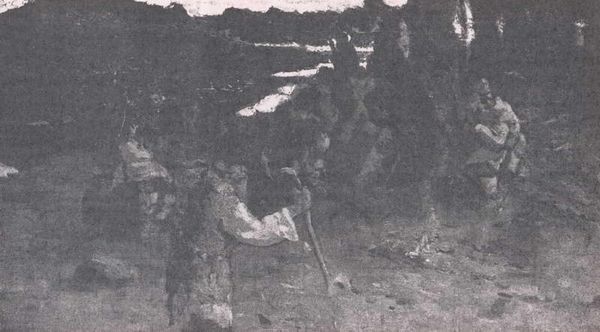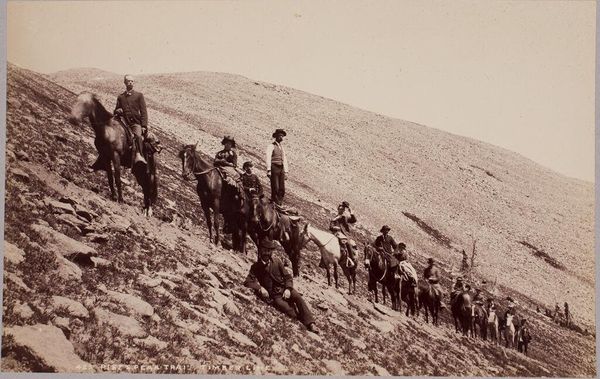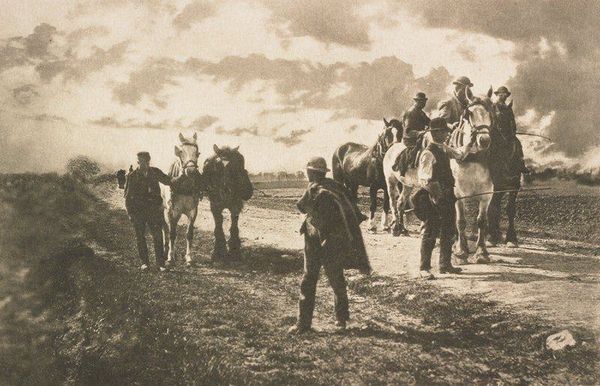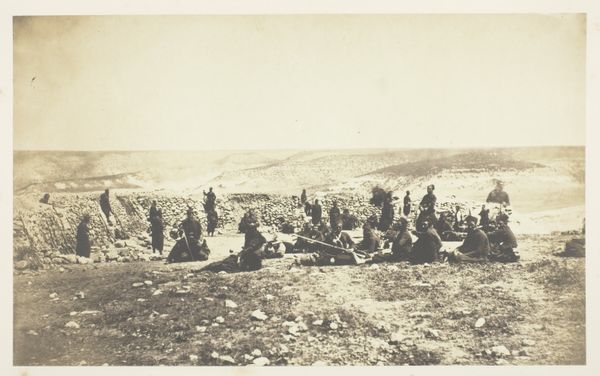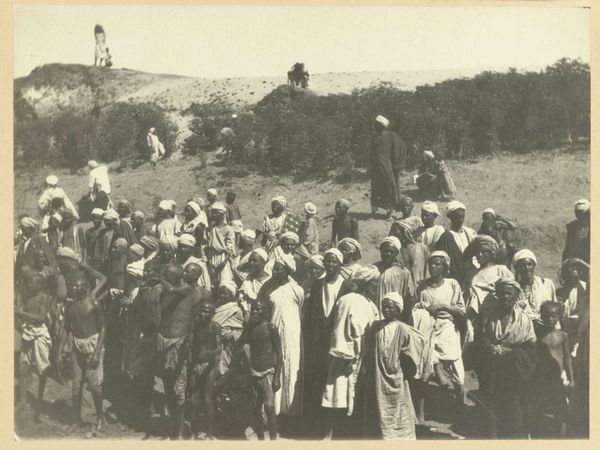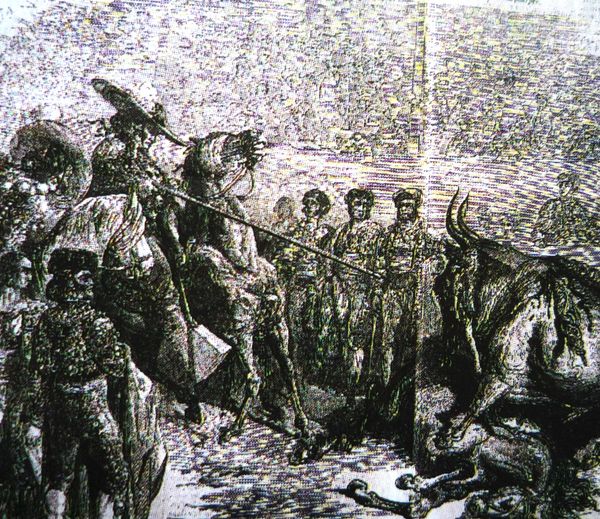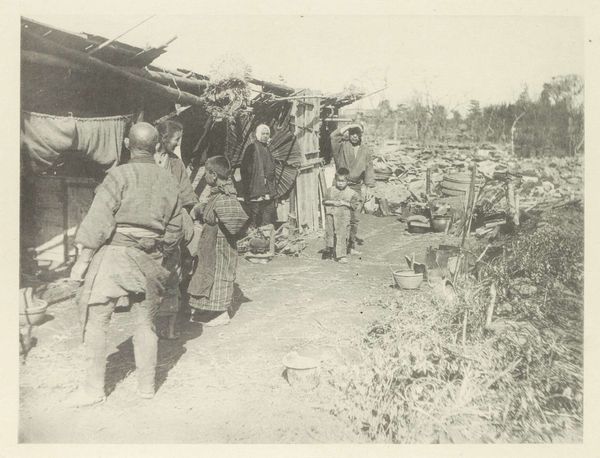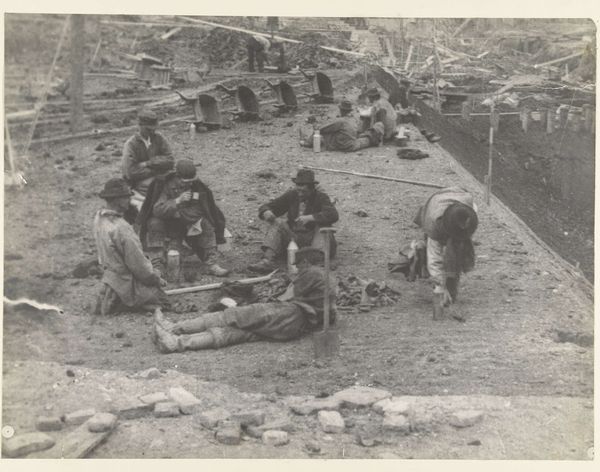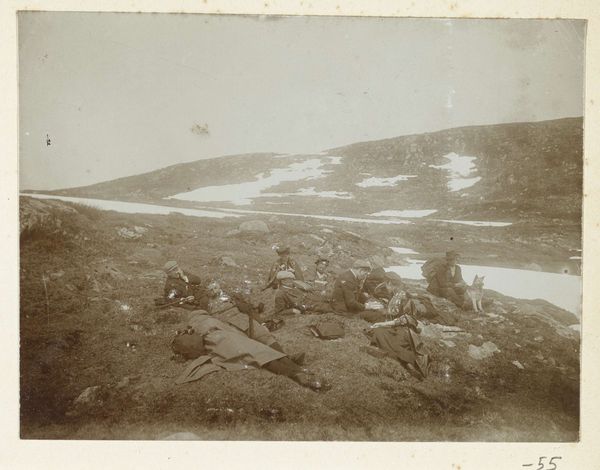
Copyright: Public domain
Curator: We’re looking at Nicholas Roerich's “Campaign,” a charcoal and pencil drawing from 1899. What’s your initial impression? Editor: Somber. A hushed quiet pervades this sketch, despite the figures present. The stark contrasts and tonal shifts capture a profound stillness, a certain weight of impending events. Curator: It’s compelling to consider this piece as historical narrative. Roerich, deeply influenced by Russian history and folklore, depicts what appears to be a scene of medieval warriors poised at a strategic overlook. I'm thinking about the societal context—the late 19th century interest in national identity, expressed through art. Editor: I'm struck by the composition itself—the arrangement of the figures leading the eye toward that distant, panoramic landscape. Roerich’s use of line and shadow to define space is fascinating; those diagonals really emphasize depth, drawing the viewer into the scene. I wonder about the semiotics of the figures’ attire, all hinting towards the clothing and gear construction of the era. Curator: The materials are very important here too, think about the availability and the costs. This wasn’t an oil painting; charcoal and pencil lent themselves to quick, almost documentary-style record keeping for a period deeply concerned with cataloging history and legend, allowing for reproductions in newspapers and books of the time, democratizing visual experience for many. Editor: That textural quality achieved with charcoal adds so much atmosphere, doesn’t it? Those rough strokes build a sense of harsh, natural environment and it's really about conveying the sublime, nature playing its significant role here. Curator: Roerich’s choices really spotlight the raw materials themselves— the charcoal becoming a critical component of how meaning is extracted here from a material standpoint. It seems like the image's original format had the artwork more sharply in focus with well defined values. Editor: Interesting how our perception shifts based on what the piece might've initially looked like. We now mostly see how composition and materials inform mood. Curator: Right, it underscores how artistic materials can embed societal significance into form. Editor: Well said, highlighting how a look into form opens new thoughts on the art itself.
Comments
No comments
Be the first to comment and join the conversation on the ultimate creative platform.
